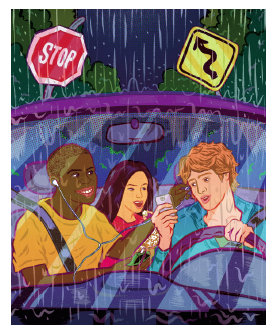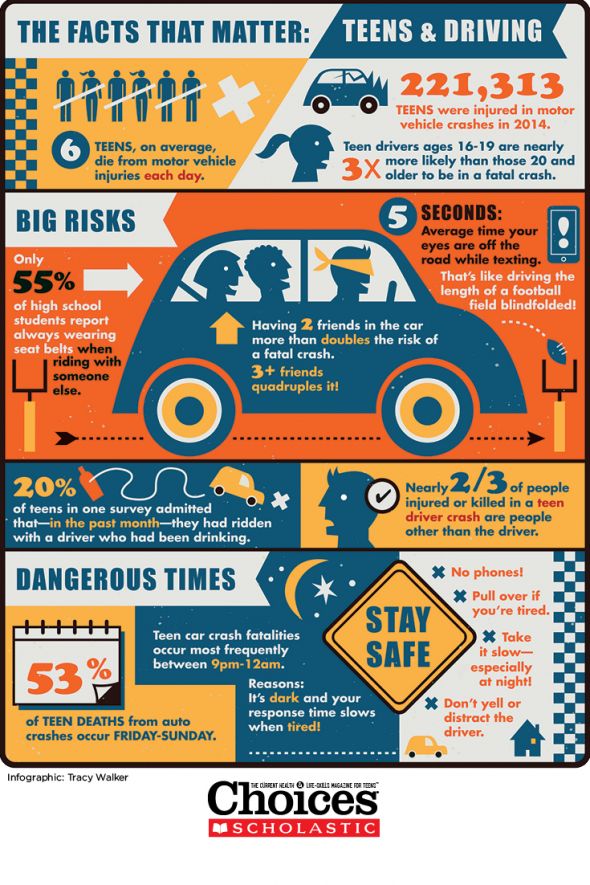 This week is National Teen Driver Safety Week, and today we have a guest post from Kim Tranell, editor of Choices, Scholastic’s health and life skills magazine for teens. She’s sharing a crucial message about the life-saving movement to empower teen drivers and passengers.
This week is National Teen Driver Safety Week, and today we have a guest post from Kim Tranell, editor of Choices, Scholastic’s health and life skills magazine for teens. She’s sharing a crucial message about the life-saving movement to empower teen drivers and passengers.
Why are so many teens dying in car accidents?
When a writer sent us this pitch along with some sobering statistics (the true gut punch: today alone, six teens will die in motor vehicle crashes), I became determined to dig deep and find the real answer. Before I knew it, my team and I were falling into an emotionally intense search, reading devastating headlines from local newspapers across the country. Grieving high schools, shattered soccer teams—the stories behind that seemingly implausible statistic were utterly heartbreaking. And they held clues to our answer.
So today, in honor of National Teen Driver Safety Week, we wanted to help you understand the surprising takeaways we uncovered as we researched our October cover story, “Danger Behind the Wheel.” We sincerely hope they inspire you to share our article and pledge (more on that in a minute!) with every young person you know.
1. Car crashes aren’t accidents.
We were surprised to hear that safe driving advocates are now challenging the language around motor vehicle crashes, because most are entirely preventable. Calling crashes “accidents” takes away from the personal responsibility we should all feel to keep each other safe on the road.
2. The teen sleep crisis is killing people.
Whether it’s due to too much tech or school schedules that don’t align with their biology, most teens are severely sleep deprived—and it’s deadly. Teens need to be conditioned to feel just as uneasy getting behind the wheel after only four or five hours of sleep as they would after drinking alcohol.
3. Texting isn’t the only distraction.
Yes, fiddling with your phone is all to common and incredibly dangerous—but so is changing your music, reaching for lip gloss, and turning around to talk to a friend. Experts say not enough teens are getting thiscrucial portion of the distracted driving message.
4. Passengers are one of the greatest safety hazards.
For 16- and 17-year-olds, the risk of being killed in a crash increases by 44 percent when one passenger younger than 21 is in the vehicle. With two passengers, it doubles. And with three or more, that risk quadruples. Why? Having friends in the car presents the most intense set of distractions, plus it emboldens teen drivers to show off by speeding or drivingly aggressively.
5. Passengers also hold tremendous power.
Across the board, driving experts are calling for a new movement among young people, where they speak up if they feel unsafe—and take their co-pilot role as seriously as they would a position behind the wheel. We urge you to join in by sharing our story and our Power Passenger Pledge.
Educators: Please visit the Choices Ideabook blog, where we’ve conveniently compiled a list of our fantastic resources for teaching this story. There you’ll find links to video, worksheets, and more!




